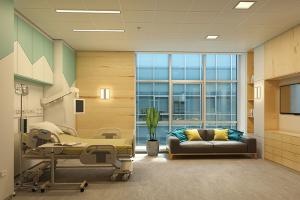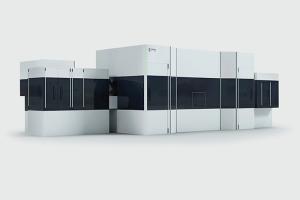Fire protection devices offer solutions for complex challenges
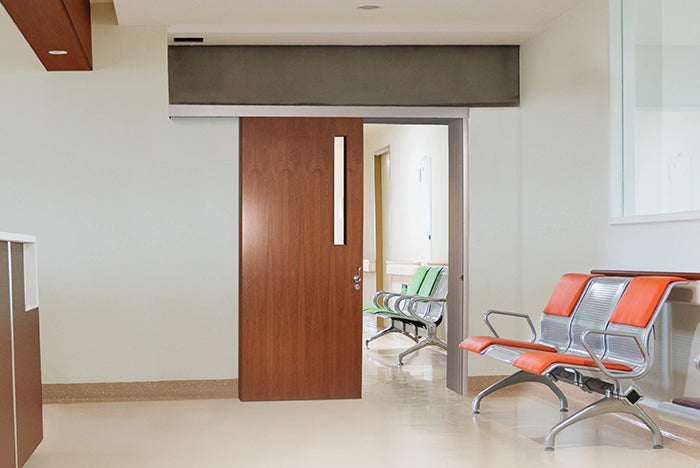
Image courtesy of AD Systems
Fire protection in hospitals encompasses a variety of product types, including fire detection technology, alarms and alerts, suppression equipment, and fire and smoke barriers. Taken together, they deliver more effective and sustainable fire protection, saving property and lives. What’s more, the technology has evolved and improved in recent years.
As hospital design has changed, mandating more complex systems in tighter spaces, fire protection technology has evolved to simplify installations and retrofits with products that offer smaller footprints and improved design flexibility and risk mitigation, says Cliff Hartford, business development manager for fire protection at Victaulic, Easton, Pa. “Assemblies, which package individual components into singular products, make fire protection solutions smaller and lighter and ensure code compliance.”
Advancing technologies
The past two years have seen exciting advances in fire protection technology. Examples include the development of more sensitive and rapid detection systems and integration with artificial intelligence and building automation systems (BASs).
“Also, advances in data analytics and cloud-based remote monitoring are driving proactive and remote system management,” says Kartik Kumar, vice president and general manager for global commercial fire and managing director at Edwards, a Carrier company based in Bradenton, Fla. “Enhanced evacuation systems with mass notification methods and a growing focus on energy efficiency are other notable trends.”
Suzanne Rahall, industry director of health care security, fire and HVAC at Johnson Controls, Milwaukee, sees an increase in the types of integration requests. “For example, sometimes we see the integration of smoke detectors in patient rooms to nurse call systems as a redundant output of the alarm. This requires training for the hospital’s clinical staff as well as the facilities team. The National Fire Protection Association’s NFPA 4, Standard for Integrated Fire Protection and Life Safety System Testing, will be integral to compliance testing in these situations.”
Health care facilities are increasing their renewable energy and energy storage, which has prompted the issue of lithium-ion batteries and the risk of fire and thermal runaway, according to Steve Wagman, national business leader for health care at Siemens Smart Infrastructure USA, Peachtree Corners, Ga. “Protecting battery energy storage systems with early detection and suppression is critical. Siemens offers a solution with early warning detection for fast response and extinguishing to minimize damage to health or property.”
Still, hospitals pose challenges to vendors of fire protection systems. The biggest issues today are a lack of funding, confusion about codes and standards and how to interpret their implementation, and a diminished pool of experienced facilities managers, according to Mickey Eberts, CEO at REMEDI8, Lenexa, Kan. “Facilities managers are asked to navigate code interpretation and application. They need to know which codes apply.”
Breaches in fire-rated assemblies — mostly due to increased re-mining of cable pathways — that hinder the ability to stop the passage of fire, smoke and toxic gases are a challenge as well, according to Kimberly White, health care business developer at Hilti, Plano, Texas. “Another is the unwanted passage of air and airborne pathogens; however, this can be mitigated with the placement of fire and acoustic systems in the walls and floors of health care facilities.”
Sensing and notification
Siemens offers Advanced Signal Analysis (“ASAtechnology”) detectors, with a “no false alarm” guarantee, which detect smoke, heat and carbon monoxide, and eliminate nuisance false alarms. Siemens also has developed the ISOtechnology Class-X (Style 7) feature, which provides built-in isolation in all its major fire system devices and can isolate a fault or short on a circuit. “If a circuit of detectors on a medical-surgical floor has a short, ISOtechnology allows the devices to communicate to the fire panel to ensure fire and life safety protection,” Wagman says.
Johnson Controls’ SafeLINC offers remote and mobile system visibility into all buildings on the network. The cloud-based, data-hosting infrastructure allows users to remotely access and gather actionable data from their suite of fire alarm control units. Also, Johnson Controls’ ESNet, an internet protocol-based network that centralizes monitoring and control across many buildings and regions, enables users to optimize fire and life safety network design and installation. Finally, the company’s building system information unit software allows for centralized reporting and controls on non-listed PCs, offering the flexibility to add features.
In recent years, fire protection systems have become more service-oriented, allowing users to view systems from their PCs and smart devices, according to Mark Indgjer, product manager at Potter Electric Signal Co., St. Louis. “We’ve introduced a variety of components that enhance our systems: The IntelliCom Advanced Gateway includes a mobile application designed to view real-time events and system status; integrated voice has built-in voice evacuation capabilities; and networking allows for peer-to-peer interfacing with multiple panels.”
Edwards offers the ModuLaser aspirating smoke detection system that delivers a wide sensitivity range, which is critical in hospitals where patient safety and the integrity of equipment and supplies are paramount, according to Kumar. Its modular design allows for a customized and scaled installation to fit the needs of different health care settings. “Our ClassiFire technology minimizes the occurrence of false alarms. Also, multiple alarm levels enable investigation and containment actions before raising the fire alarm and evacuating the building.”
The Genesis LED ceiling mass notification speaker from Edwards combines the LED Series’ functionality, installation and maintenance simplicity and cost savings with exceptional sound quality, Kumar adds. “Also, four-color and cover marking options give users the ability to color-code their health care facility event notifications.”
Sprinklers, barriers and doors
Victaulic has developed the VicFlex system to streamline sprinkler system installations within increasingly complex buildings. The VicFlex Series VS2 standard coverage sprinkler, a one-piece, 5.6 K-factor sprinkler, can be used in retrofit applications to minimize the need for extensive recalculations as hospitals expand. The VicFlex Series VS1 flexible dry sprinkler is used in pre-action systems to mitigate the risk of costly hospital repairs by ensuring that water is nowhere near sensitive equipment. Its 2-inch bend radius allows installation in tight spaces to avoid obstructions and eliminates soffit construction.
“Looking ahead, flexible hoses are being developed in larger diameters — up to 4 inches — to help with obstructions in tight spaces,” Hartford says. “This will allow system designers to keep pipe footprint and components small and avoid adding more components than necessary.”
Fike Corp., Blue Springs, Mo., offers DuraQuench, a low-pressure, pumped, water-mist system that connects to a building’s water main or reservoir. The company recently introduced the smaller DuraQuench Pro, which offers eco-friendly fire suppression. “I believe that light-hazard, low-pressure water-mist systems will be used in more hospitals in place of traditional sprinkler systems,” says Rick Seidel, fire protection channel manager. “Water mist uses less water, causes less collateral damage after an activation and is effective at quickly extinguishing a fire and scrubbing smoke from the air, making it safer to evacuate.”
Specified Technologies Inc., Somerville, N.J., offers the Firestop Locator, a tool that helps facilities managers maintain fire and smoke barrier compliance. The company recently introduced EZ-Path retrofit products to its catalog, a game changer in achieving compliance within existing health care facilities, according to Kelly Mason, director of health care partnerships. “Our retrofit devices remediate overfilled sleeves and cable trays, returning once-deficient infrastructure to specification without the need for additional firestop products.”
REMEDI8 has introduced a mobile containment unit for hospitals, which allows maintenance to be performed above the ceiling. The unit contains dust and debris while the work is being performed through a built-in HEPA filter and fan, and it can be set up in 30 seconds. “The unit can be used by one person via our lift and lock mechanism,” Eberts says. “A 6-foot ladder can be set up and fully extended inside the unit for access. The unit is white powder-coated, which makes it easy to clean.”
New technology allows for remote inspection of dampers as permitted by NFPA 80, Standard for Fire Doors and Other Opening Protectives, and NFPA 105, Standard for Smoke Door Assemblies and Other Opening Protectives, according to Michael Bulzomi, product manager, commercial dampers, for Greenheck, Schofield, Wis. He notes that this can reduce inspection, testing and maintenance costs, reduce above-ceiling work and provide the ability to test inaccessible dampers.
Greenheck now offers the Belimo FSKN module, which connects seamlessly to fire alarm panels or a BAS through BACnet or Modbus communication protocols. “It also monitors the status of the damper’s full-open and full-closed position and can be commanded to cycle via the fire alarm panel or BAS to confirm proper operation in compliance with regulations,” Bulzomi says.
Hilti recently introduced the CFS-MSL modular firestop sleeve for cable penetrations that can be used in new construction and retrofit applications. It is designed to contain the spread of flames, smoke and health hazards in case of a fire. “This benefits hospitals because they do not have to re-firestop these penetrations, and the cable pathways are protected in the future,” White says. “Along with Hilti’s CP 653 firestop speed sleeve, this expansion of our cable pathway offerings gives hospitals many options for protecting their cable pathways with firestop and air-leakage products to support fire safety and infection control.”
Safti-Seal, Bellevue, Wash., offers the Smoke & Sound Gasket (SSG), which has been tested to a UL 2079 Level III seismic rating with 100% movement capabilities and is certified to the lowest leakage rating possible with the smallest installed joint available, according to Mike Tullis, vice president of sales and marketing. “Just like Safti-Seal fire-rated gaskets, the SSG is odor- and volatile organic compound-free and rated for the most severe deflection and cycling, with up to 4-inch joint protection.”
Technical Glass Products, Snoqualmie, Wash., has introduced the TGProtect FR system, a fire-rated, full-lite door system that is certified to forced entry standards, says Devin Bowman, general manager. “This assembly can help meet fire- and life-safety code requirements and other design intents — such as visibility, light transmission and enhanced security.
“We’re seeing a bigger push for the marriage of fire-protection doors and windows with other products to meet aesthetic goals and life-safety performance requirements,” Bowman says. “This can range from decorative glass to different types of access control door hardware as well as security-rated components that are compatible with fire-rated ones.”
AD Systems, Everett, Wash., has rolled out the FireSlide sliding door system. This 45-minute, fire-rated manual system allows for the use of sliding doors in 60-minute corridors, a common occurrence in hospitals and clinics. “The system is positive latching and self-closing as required by life safety codes and can be constructed with a flush wood (fire-rated) door featuring a variety of laminate or veneer choices,” says Tysen Gannon, LEED AP, a consultant at AD Systems.
Going remote
“One of the most exciting advances coming down the pike is the new NFPA 915, Standard for Remote Inspections and Tests, to allow remote system inspection and testing [pending adoption by authorities having jurisdiction],” says Rahall of Johnson Controls. “Fire protection product manufacturers will adapt the new protocols and processes and leverage a variety of technologies to enable and support remote capabilities.”

SLIDE AWAY
The FireSlide door system can meet rating requirements for 60-minute corridors while preserving space that otherwise would be sacrificed to swing-arc trajectories. AD Systems
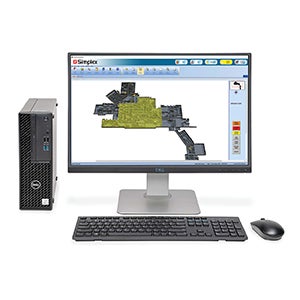
COMMAND CENTRAL
This building system information unit software allows for centralized reporting and controls on non-listed PCs, offering the flexibility to add features. Johnson Controls
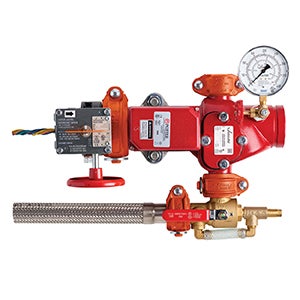
ALL IN ONE
The Series UMC universal manifold check assembly integrates all pre-mounted components into a compact unit. Victaulic
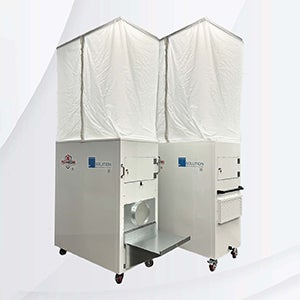
SAFE SPACE
This mobile containment unit contains dust and debris while work is being performed through a built-in HEPA filter and fan. REMEDI8

SAFELY SEALED
The Smoke & Sound Gasket is odor- and volatile organic compound-free and rated for the most severe deflection and cycling, with up to 4-inch joint protection. Safti-Seal
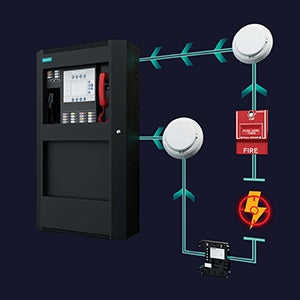
EARLY WARNING
The ISOtechnology feature provides real-time wire fault location reporting and increased protection against short circuits. Siemens

SAFETY SLEEVE
The CFS-MSL modular firestop sleeve helps to contain the spread of smoke and other hazards in case of a fire. Hilti

READY DETECTION
The ModuLaser aspirating smoke detection system delivers a wide sensitivity range, which is critical in hospitals where patient safety and the integrity of equipment and supplies are paramount. Edwards

WATER RESCUE
The DuraQuench low-pressure, pumped, water-mist system connects to a water main or reservoir. Fike Corp.
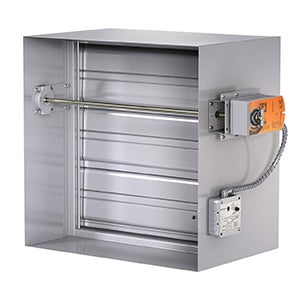
DAMPER DIRECTOR
The Belimo FSKN module connects to fire alarm panels or building automation systems and monitors the status of a damper’s full-open and full-closed position. Greenheck

KEEPING CONTROL
PotterNet is a desktop application that facilitates the monitoring and control of fire alarm control panels. Potter Electric Signal Co.
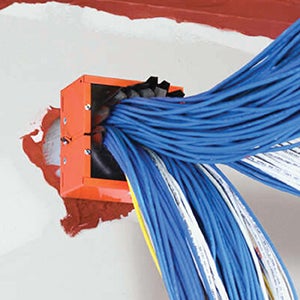
GOOD AS NEW
The EZ Path retrofit device remediates overfilled sleeves and cable trays, returning once-deficient infrastructure to specification without the need for additional firestop products. Specified Technologies Inc.
Neal Lorenzi is a Mundelein, Ill.-based contributor to Health Facilities Management.


